
Osanna of Cattaro was a Catholic visionary and anchoress from Cattaro. She was a convert from Orthodoxy of Serbian descent from Montenegro. She became a Dominican tertiary and was first venerated in Kotor. She was later beatified in 1934.
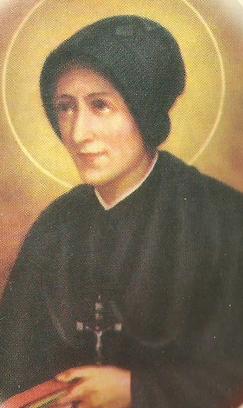
Vincenza Gerosa, born Caterina Gerosa, was an Italian Roman Catholic professed religious and the co-foundress of the Sisters of Charity of Lovere that she founded alongside Bartolomea Capitanio. Gerosa met Capitanio in 1824 and the two consecrated themselves to God in the name of educating children and tending to the poor of the Bergamo area.

Szymon of Lipnica was a Polish catholic priest and a professed member from the Order of Friars Minor. He became a sought after and noted preacher and took as his preaching inspiration Saint Bernardine of Siena and also was a strong proponent of popular devotions that he worked to spread.
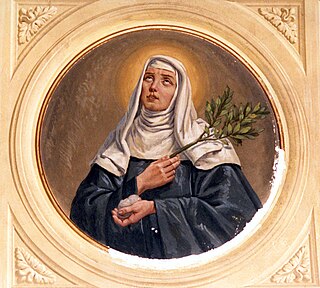
Veronica of Milan was an Italian nun in the Augustinian Order. She was reputed to have received frequent visions of the Virgin Mary, and her local cultus was confirmed by Pope Leo X in 1517.
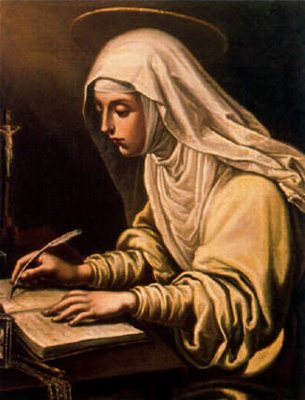
Catherine de' Ricci, OP, was an Italian Catholic nun in the Third Order of St. Dominic. She is believed to have had miraculous visions and corporeal encounters with Jesus Christ. She is also said to have spontaneously bled with the wounds of the crucified Christ. She is venerated for her mystic visions and is venerated as a saint by the Catholic Church.

Maria Grazia Tarallo, CAE was an Italian Catholic member of the Crucified Sisters Adorers of the Holy Eucharist. She was well known for her charitable nature as well as her strong devotion to the Eucharist.

Angelo Agostini Mazzinghi, O.Carm was an Italian Catholic priest and Carmelite friar. He was a noted preacher from Florence and was known for his pious devotion to the Carmelite Rule and to the spread of the gospel.
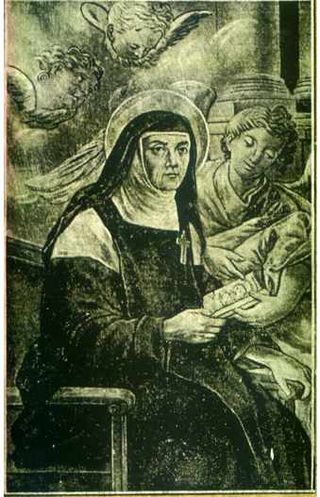
Inés de Benigánim, religious name Josefa María of Saint Agnes, - born as Josefa Teresa Albiñana Gomar - was a Spanish nun of the Discalced Augustinians. She became known for her profound spiritual and theological insight as well as for her severe austerities she practiced during her life. Her beatification was celebrated in 1888 in Saint Peter's Basilica.

Maddalena Panattieri, OP was an Italian Sister of Penance of Saint Dominic. Panattieri was a stigmatic and received visions during her life with one in particular being the French invasion of the Italian peninsula. She served as a catechist to children and was noted for her simple existence.

Agostina Camozzi - in religious Cristina - was an Italian Roman Catholic professed religious from the Order of Saint Augustine. Camozzi led a dissolute life as a widow and a soldier's mistress before she became a nun and adopted a life of total repentance.

Domenico Spadafora was an Italian Roman Catholic priest and a professed member of the Order of Preachers. Spadafora was a noted evangelist and attracted countless to the Dominican fold while also converting the hearts of others who led dissolute lives. He is best known for being the first superior of a church he oversaw construction of in Monte Cerignone after receiving the papal approval of Pope Alexander VI to commence such work.

Elena Duglioli was an Italian Roman Catholic aristocrat from Bologna noted for her devotion to Christian life and social teachings. Duglioli wanted to become a nun for the Poor Clares but instead married in order to please her parents. Duglioli is best known for commissioning a chapel with an image of Saint Cecilia to whom she was devoted.
Giacomo Benefatti was an Italian Catholic priest and professed member of the Order of Preachers who ascended to the position of Bishop of Mantua. Benefatti became noted for his tender care of the ill during epidemics of plague and both Pope Benedict XI - a close personal friend - and Pope John XXII held him in high esteem.

Giacomo Bianconi was an Italian Roman Catholic priest and a professed member of the Order of Preachers. Bianconi - who hailed from Umbria - joined the order in his adolescence and dedicated his pastoral career to his flock and on one notable occasion aided refugees when Frederick II sacked the area in 1248. He also combatted heresies and managed to convert one of their chief propagators while also distinguishing himself through his life of extreme poorness that went past the Dominican standards.
Elena Valentinis was an Italian Roman Catholic professed religious from the tertiaries of the Order of Saint Augustine. Valentinis was born to nobles and married a knight during her adolescence while mothering six children before she was widowed in 1441. She soon became a professed religious and dedicated herself to austerities and a life of complete penance.
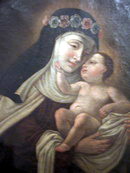
Giovanna Scopelli, O.Carm was an Italian Carmelite nun who established her own convent. Scopelli was forbidden to enter the third order branch of the order during her adolescence and waited until her parents died to embrace the religious life.

Giuliana Puricelli was an Italian Roman Catholic professed religious from the Order of Saint Augustine. Puricelli left her home after her father wanted to have her married and so fled to a hermitage where she placed herself under the spiritual direction of Caterina Moriggi. The two became close friends and their hermitage grew over the following decades. Her reputation was noted throughout the area for her contemplation and penitential practices as well as for her desire to live a cloistered life meditating on God.
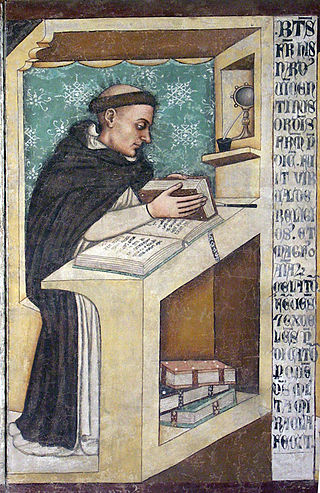
Isnardo da Chiampo, OP was an Italian Catholic priest and professed member in the Order of Preachers.
















